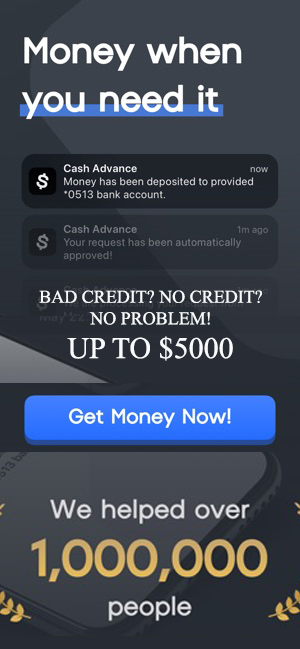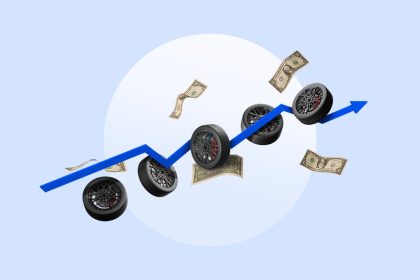Key takeaways
- Early withdrawal fees on CDs usually cost between 90 and 365 days of interest. Generally, the longer the CD term, the higher the penalty.
- If you need funds right away to cover a large, unexpected expense, it might be worth liquidating your CD early.
- Strategies such as CD laddering or choosing a no-penalty CD can give you early access to cash without losing money.
With top rates higher than some high-yield savings accounts, federally-insured certificates of deposit (CDs) are a low-risk place to earn a guaranteed rate of return. However, traditional CDs require you to keep your money in the account for a certain amount of time, from a few months to a few years. If you withdraw money from the CD before the term ends, you will likely have to pay an early withdrawal penalty.
If you’re thinking about dipping into your CD funds before the maturity date, here’s a rundown of when making an early withdrawal might make sense. And if you haven’t opened a CD yet, read on to figure out how to steer clear of ever worrying about paying a penalty.
What is a CD early withdrawal penalty?
A CD early withdrawal penalty is what you pay for taking your money out of your traditional CD before the CD’s term is over. This penalty usually consists of some amount of interest earned on the CD.
How big is the penalty for early CD withdrawal?
The size of the penalty you have to pay will vary based on a few factors, including:
- The bank: Each bank sets its own early withdrawal penalties. Before you open a CD, it’s worth checking the account details and terms to see how much the bank will charge if you make an early withdrawal.
- The CD term: The term of a CD tends to impact the early withdrawal fee. In general, the longer a CD term, the bigger the penalty.
- The yield: Most banks charge early withdrawal fees based on the annual percentage yield (APY) the CD pays. You might see CDs with penalties of 90 days of interest or 180 days of interest. That means the balance of the CD and its interest rate also impact the fees.
- Whether you can make a partial withdrawal: Some banks will allow a partial withdrawal, which means you may only wind up paying a fee on the portion of money and interest you take out early, but many will force you to take out the entire sum.
| Financial institution | 1-year CD | 3-year CD | 5-year CD |
| Ally Bank | 60 days of interest | 90 days of interest | 150 days of interest |
| Bank of America | 180 days of interest | 180 days of interest | 365 days of interest |
| Capital One 360 | 3 months of interest | 6 months of interest | 6 months of interest |
| Bread Savings | 180 days of interest | 180 days of interest | 365 days of interest |
| Discover | 6 months of interest | 6 months of interest | 18 months of interest |
To calculate the amount you’ll pay in an early withdrawal penalty, determine how much interest you’re earning in a day or month, and then multiply that amount by the number of days or months of interest you forfeit. Bankrate’s CD calculator can help you determine how much interest you’re earning over time when you enter the CD’s APY and the amount deposited.
When is it a good idea to make an early withdrawal on a CD?
In many cases, it makes sense to leave your money in a CD for the full term to avoid having to pay the early withdrawal penalty. However, there are times when you decide paying the penalty is worth it. An early CD withdrawal could be worth considering if the benefits outweigh the penalty. This might apply in emergencies when you need cash to avoid high-interest debt or if rising rates let you reinvest at a better return, for example. Weigh the penalty against potential savings or gains before deciding.
When you need the money for an emergency expense
One example would be when you need the money to cover an emergency expense. If your car breaks down, or you’re facing a medical bill you can’t otherwise pay, it’s often better to use the money in your CD to pay the bill if you don’t have enough money in another savings account. If you’re going to wind up covering that expense with a credit card with a high annual percentage rate (APR), getting the funds from a CD can be a better move that helps you avoid high-cost debt.
Money tip:
Typically, the best place to build an emergency fund is in an FDIC-insured high-yield savings account. High-yield savings accounts may not have a fixed APY like a CD does, but they offer easier access.
When you could use the money for a down payment
Though ideally you could time your CD to purchases you were planning, such as a house or a car, sometimes life doesn’t work out that way. So if you need to make an early withdrawal from a CD for a major purchase, it will likely make sense. A bigger down payment reduces the size of your loan. A CD early withdrawal penalty may be paltry in comparison with how much you could save in interest by taking out a smaller mortgage or auto loan.
When rates rise significantly
When you open a fixed-rate CD, you lock in the interest rate for the entire term. If you open a CD when rates are low and rates then rise significantly, it may be worth breaking your CD to secure a higher rate.
For example, let’s say that breaking your current CD will result in a $25 early withdrawal fee. However, you might find that a new CD with a higher APY will ultimately earn you $75 more in interest than the original CD. You’d come out ahead by making the early withdrawal and opening the new CD.
Tax benefit of an early CD withdrawal
One silver lining of incurring a CD’s early withdrawal penalty is it could reduce your tax obligations. If you pay an early withdrawal penalty, you may be able to deduct that amount from your taxable income.
How to avoid early withdrawal penalties
You can still open a CD while minimizing the potential that you’re going to wind up paying to access the funds. Here’s how.
Build a CD ladder
Instead of opening just one CD, think about building a CD ladder to diversify your deposits. With a ladder, you can spread out your funds across multiple term lengths, which helps you accomplish two key goals. First, you’ll be able to take advantage of multiple interest rates, and second, you’ll always have a chunk of cash that is relatively close to maturity.
For example, rather than depositing $15,000 in a 3-year CD, a ladder might spread out five chunks of $3,000 in five term lengths: six months, nine months, one year, two years and three years. Rather than feeling like you need to withdraw all the money and pay a hefty penalty on a 3-year CD, you can use money when the 6-month CD matures.
Consider investing in a no-penalty CD
No-penalty CDs offer the benefits of traditional CDs: locked-in interest rates and higher rates than many savings accounts, but no penalty for early withdrawal.
Note, however, that no-penalty CDs often earn rates that are lower than traditional CD rates. But the benefit of greater liquidity may outweigh the cost of a slightly lower rate for you.
Avoid investing money you may need to access
It’s important to remember that when you open a CD, you’re making a commitment to keeping your money in the bank. As long as you bank with a bank insured by the FDIC or a credit union insured by the National Credit Union Administration (NCUA), your deposits are insured too (up to a limit). But it often pays to treat CDs as an investment rather than a liquid source of funds.
A top piece of advice when investing in the stock market is to only invest money you can afford to lose. Similarly, a best practice with CDs is to only deposit funds you can afford to part with for a set amount of time. As such, it’s best to have a well-established emergency fund before putting money into a CD.
A high-yield savings account may be a better option than a CD for storing funds you might need access to for an unexpected expense such as a medical bill or a car repair. Savings accounts don’t charge penalties for access to your money.
Why we ask for feedback
Your feedback helps us improve our content and services. It takes less than a minute to
complete.
Your responses are anonymous and will only be used for improving our website.
Help us improve our content
Read the full article here
















